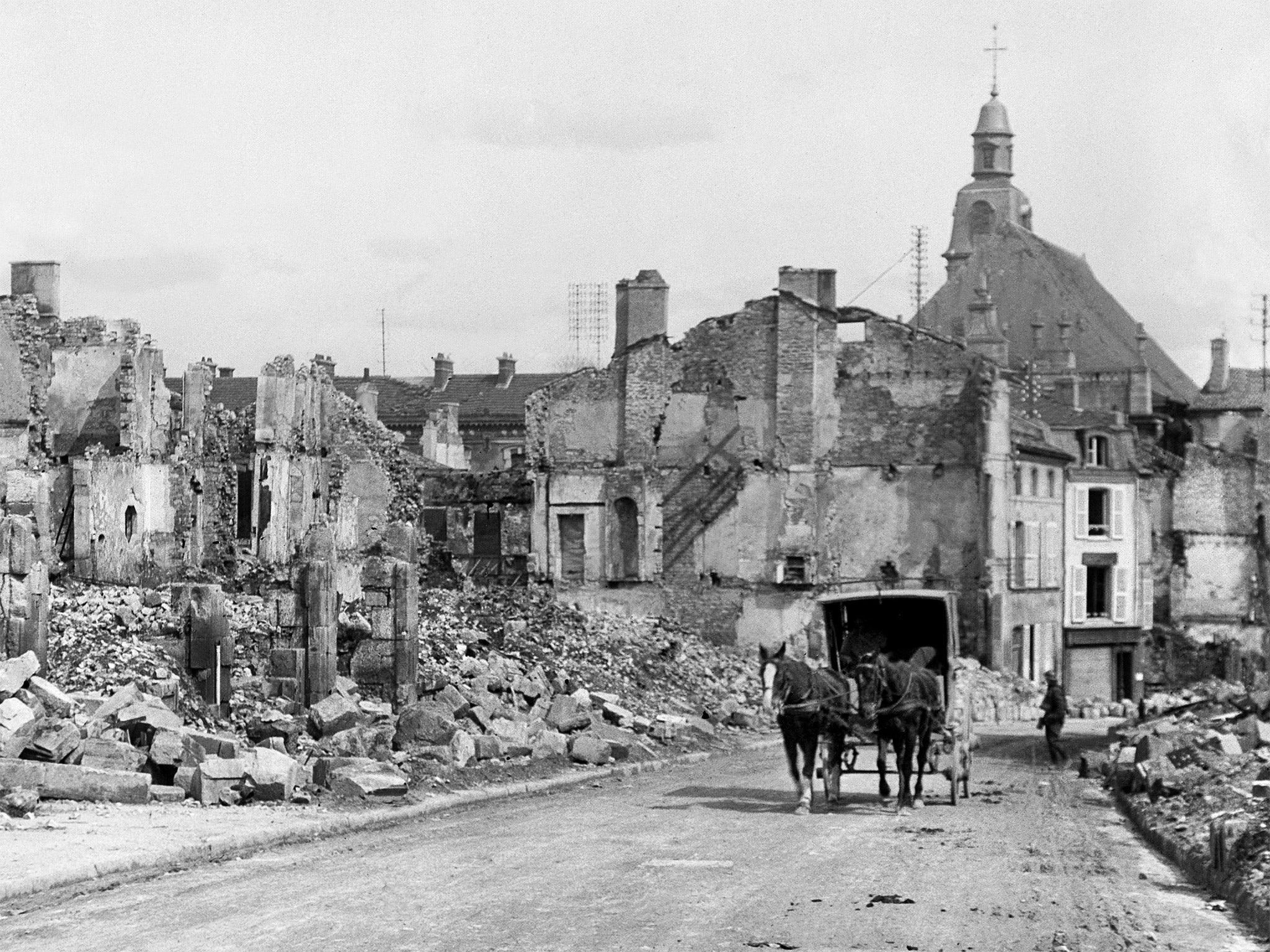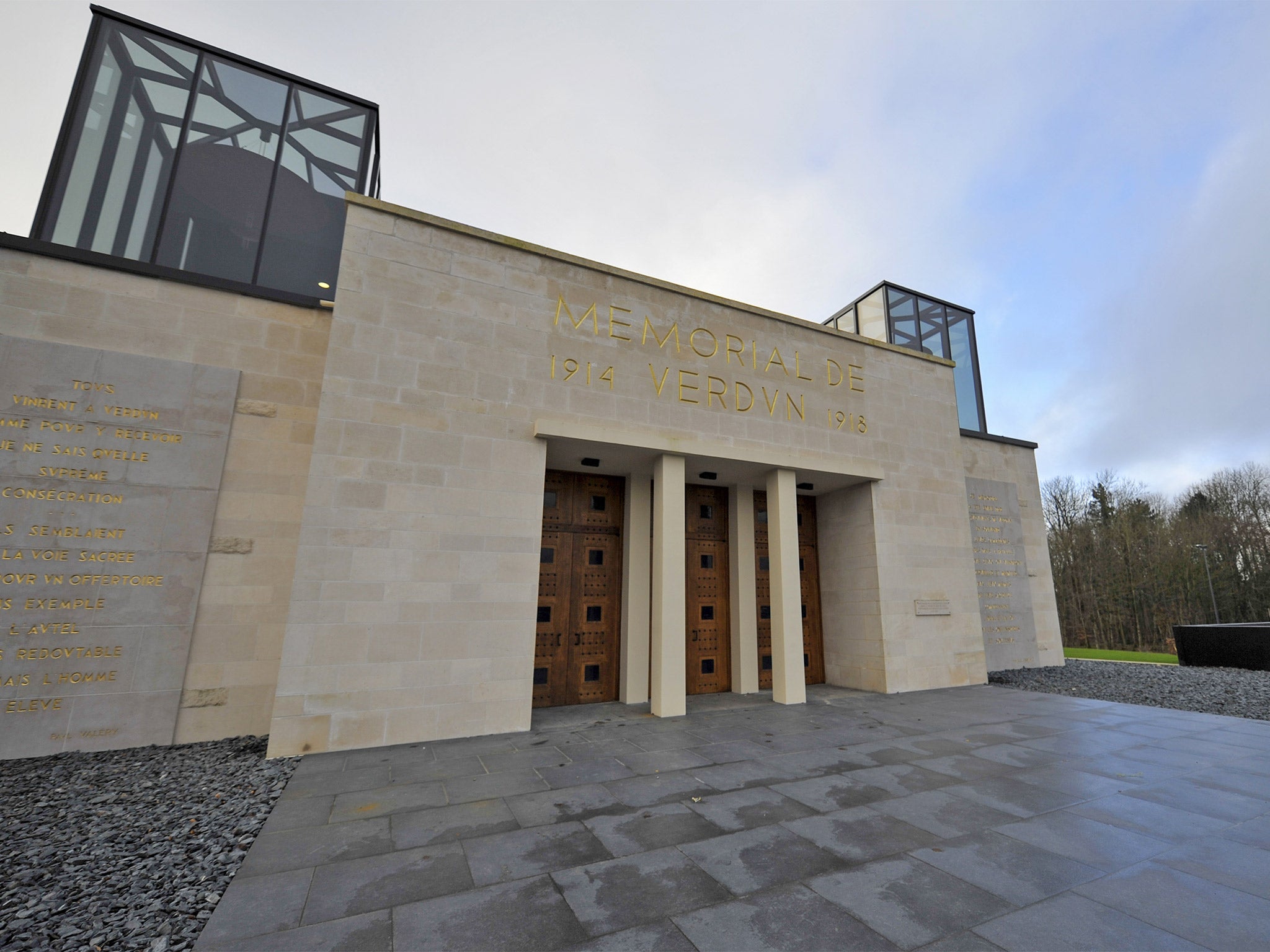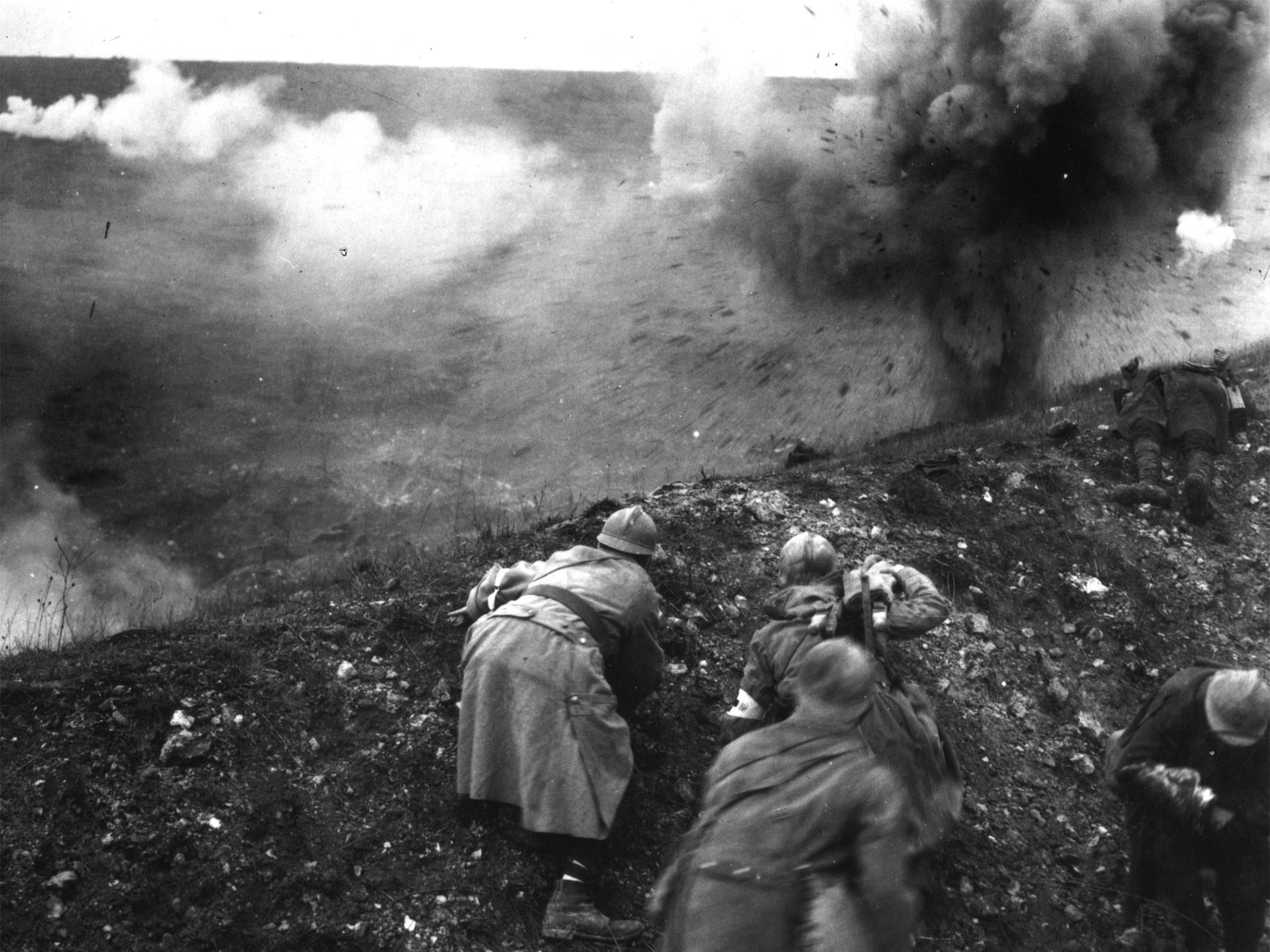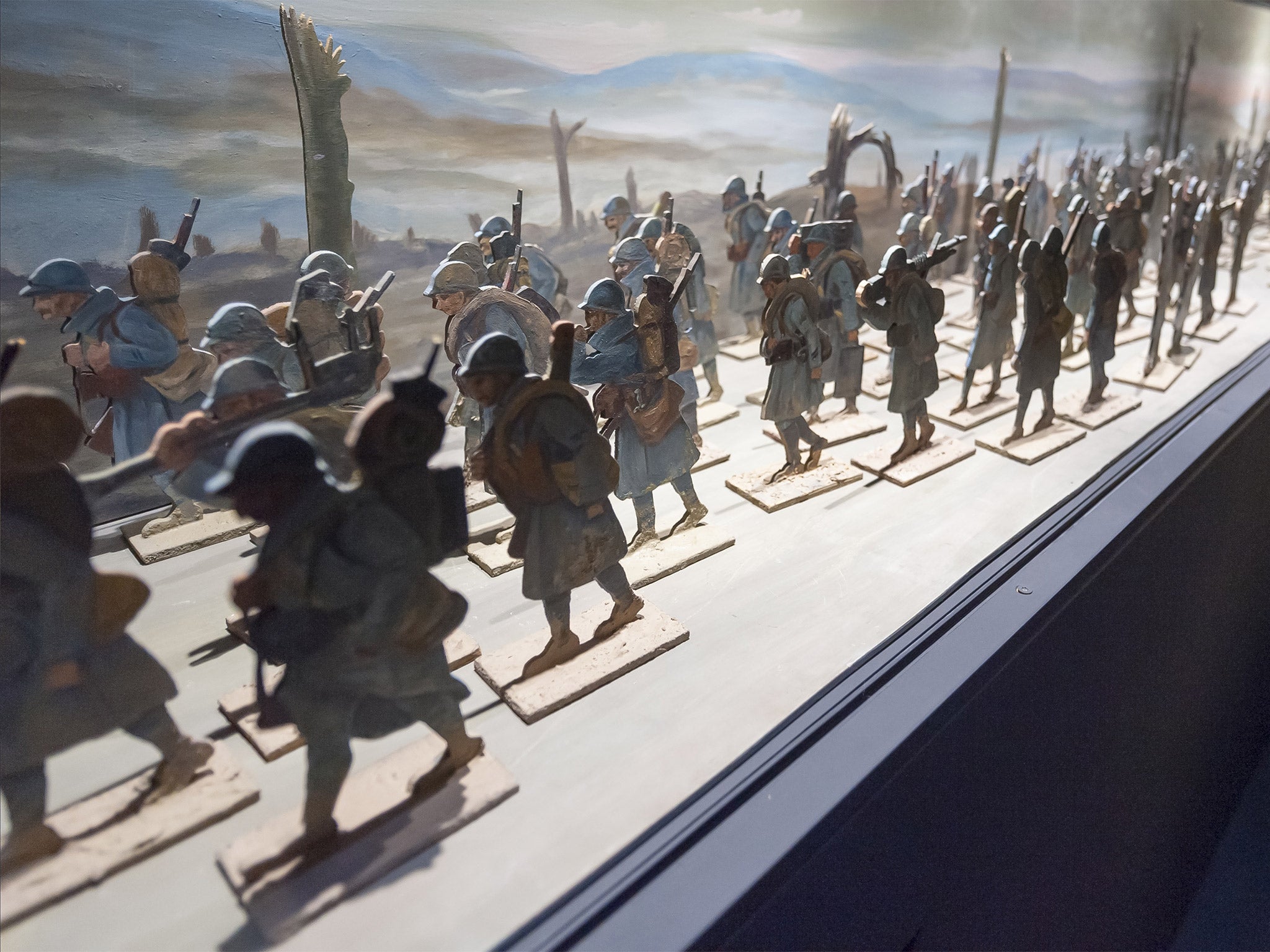First World War: The martyr villages of Verdun live on as emblems of war's folly
Nine villages on a ridge in eastern France were destroyed in a single day 100 years ago. John Lichfield looks back at a battle that, for the French, encapsulates the war of 1914-18

Your support helps us to tell the story
From reproductive rights to climate change to Big Tech, The Independent is on the ground when the story is developing. Whether it's investigating the financials of Elon Musk's pro-Trump PAC or producing our latest documentary, 'The A Word', which shines a light on the American women fighting for reproductive rights, we know how important it is to parse out the facts from the messaging.
At such a critical moment in US history, we need reporters on the ground. Your donation allows us to keep sending journalists to speak to both sides of the story.
The Independent is trusted by Americans across the entire political spectrum. And unlike many other quality news outlets, we choose not to lock Americans out of our reporting and analysis with paywalls. We believe quality journalism should be available to everyone, paid for by those who can afford it.
Your support makes all the difference.Sylvaine Vaudron is the Mayor of Douaumont even though Douaumont ceased to exist 100 years ago this Sunday. “Every summer we have a fête at the site of the old village,” she told The Independent. “It is a wonderful occasion but unfortunately, as the years go by, there are fewer and fewer of us. The number of people who can claim a connection to Douaumont is shrinking all the time.”
On 21 February 1916, the German army fired more than a million shells in a single day along a bleak ridge in Lorraine in eastern France – the greatest orgy of man-made destruction ever seen (until then). Douaumont and eight neighbouring villages were obliterated. In the following 10 months the ridge was hacked and ploughed by 32 million French and German shells. More than 300,000 French and German soldiers died.
At the end of the battle – still the longest battle in recorded history – the two armies stood a few hundred yards from where they had started, just north of the small town of Verdun. The nine “martyr” villages of the Verdun ridge were never rebuilt. They were declared “Mort pour la France” and given the Croix de la Guerre.
Officially, however, the villages live on. Their beautiful names – Beaumont-en-Verdunois, Bezonvaux, Cumières-le-Mort-Homme, Fleury-devant-Douaumont, Haumont-près-Samogneux, Louvemont-Côte-du-Poivre, Ornes and Vaux-devant-Damloup – are still in the dictionnaire national of French communes. They have mayors and village councils, mostly drawn from the descendants of the pre-1916 villagers.
“The Verdun centenary this weekend is important for everyone because it is a reminder of the sacrifice and brutality of war,” said Ms Vaudron, who runs a restaurant near the site of the original Douaumont village. “It is also important for the martyr villages because it will help us to reach out to younger people. We want to preserve the memory of those who lived here for 1,000 years, all their joys and their sufferings. We don’t want Douaumont to die a second time.”
Verdun has emerged as the emblematic French battle of the First World War – to the point of almost of blotting out France’s memories of the rest of the war. The Germans attacked on 21 February 1916; the French counter-attacked and a patch of 50 square miles was fought over with desperate and brutal intensity for 10 months. It is estimated that in places 10 shells fell on every square centimetre of land.

When the battle ended on 18 December 1916, the front lines were back where they started and France claimed a great victory. More than 700,000 French and German soldiers were wounded, captured or killed. French deaths were put at 163,000.
Verdun was the longest single battle in human history but not the most murderous. The Somme, which started four months later and ended a month earlier, caused 1.2 million casualties and 400,000 deaths. The battle of Stalingrad in the Second World War was even more bloody.
If you look at any war memorial in France, you will see a longer list of deaths for 1915 than for 1916. The real destruction of young French manhood came before Verdun, in a series of blundering, poorly planned offensives in Champagne, Artois and the Vosges. But these battles have largely disappeared from French popular memory.
Jean-Yves Le Naour, one of the brightest of a new generation of French historians of the First World War, told The Independent: “To remember those battles would have been to convict the French military leadership of stupidity and heartlessness. Instead, Verdun was erected into the great symbol of the war because it was a defensive battle which France could claim to have ‘won’.”
Another myth is that Verdun was a psychologically and strategically vital stronghold in the French lines. Mr Le Naour points out that Verdun was within a lightly defended and strategically meaningless salient – or bump – in the trenches which ran from the Channel to Switzerland.
Its claim to fame pre-1914 was that it was the sugared almond capital of the world. (It still is.)

Verdun’s strategic importance was invented after the war, Mr Le Naour says, because so much national prestige and blood had been expended on it. “A French retreat would not have been disastrous. Nor was French resistance decisive,” he said.
But between them, Verdun and the Somme ensured that the Germans could not win a military victory on the Western Front. The 700,000 German casualties in the two overlapping battles of 1916 fell short, all the same, of allowing the French and British to win. That took another two exterminatory years and American intervention.
Mr Le Naour says, however, that Verdun is important for two reasons. The 1914-18 war brought human slaughter to an industrial pitch of intensity not seen before. The new technologies of the 19th and early 20th centuries – barbed wire, machine-guns, powerful artillery and canned food – combined to allow huge armies to smash the life out of one another for weeks and months at a time.

At Verdun, the sheer weight of firepower exceeded anything seen even in the murderous campaigns of 1914 and 1915. Artillery was assembled by the Germans, and later the French, on an unimagined scale. Tactical warplanes, flame-throwers and new, more efficient forms of poison gas joined the world’s arsenal of butchery.
“The ultimate logic of industrial warfare, of warfare as annihilation, the logic of Hiroshima, began at Verdun,” Mr Le Naour said.
Verdun – myth or reality – has also become an important symbol of peace and of Franco-German reconciliation. “The moment in 1984 when President [François] Mitterrand and Chancellor [Helmut] Kohl walked hand in hand in Verdun – not just shaking hands but holding hands – changed everything,” Mr Le Naour said. “Verdun ceased being a symbol of military resistance and nationalist pride. It became a symbol of peace and the stupidity of war.”
On 29 May President François Hollande and Chancellor Angela Merkel will attend an international ceremony on the Verdun battlefield. They are almost certain, again, to walk hand in hand.
And what of Douaumont and the other eight martyr villages? France has 36,896 communes, ranging from Paris with a population of two million to battlefield villages with an official population of “0”. A drive began last year to save money by forcing smaller French communes to merge. The virtual communes of the Verdun ridge will be exempt.
Join our commenting forum
Join thought-provoking conversations, follow other Independent readers and see their replies
Comments